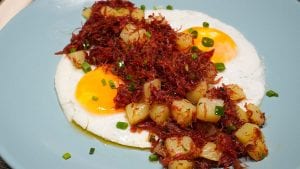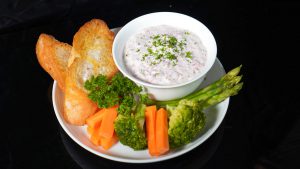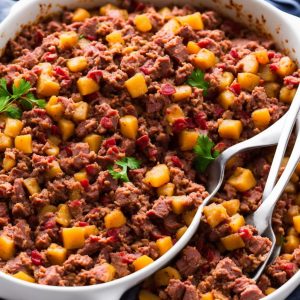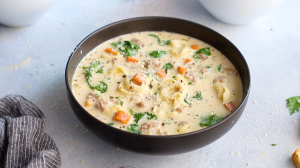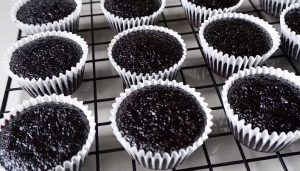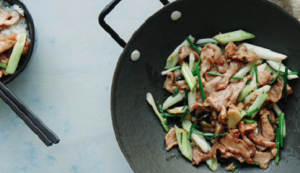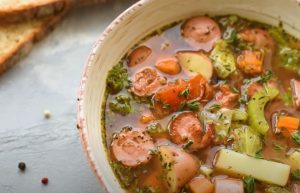This homemade corned beef recipe is a process of brining beef brisket with pickling spices and then cooked until tender. There's something incredibly satisfying about making your own corned beef, watching it transform from raw brisket into a tender, flavorful delicacy through the slow process of curing and simmering.
Most of the ingredients in this recipe are readily available in your kitchen, but you might need to find the pink curing salt and the whole spices like allspice berries, mustard seeds, coriander seeds, cardamom pods in your local supermarket. The pink curing salt gives the corned beef its distinct pink color and prevents bacteria during the curing process. All these spices combine to give a unique flavor to the corned beef.
Corned Beef Recipe Ingredients
Allspice berries: These are dried unripe berries that have a strong, sweet and pungent flavor. It's a key component in the pickling spices.
Mustard seeds: These small seeds add a pleasant tanginess to the dish.
Coriander seeds: These have a slightly sweet, citrusy taste.
Red pepper flakes: They are used to add heat to the pickling spices.
Black peppercorns: These add heat and depth of flavor.
Cloves: They have a sweet, slightly bitter flavor and are used sparingly.
Cardamom pods: It's a warm spice with a sweet, floral taste.
Bay leaves: These add a subtly bittersweet flavor.
Cinnamon: Just half a stick adds a hint of sweet, woody flavor.
Kosher salt: It's used for the brine. It has a larger grain size than regular table salt.
Pink curing salt: It gives corned beef its distinct pink color and prevents bacteria during the curing process.
Brown sugar: It adds a slight sweetness to the brine.
Beef brisket: It's used for its layers of fat that keep it moist during the long cooking time.
One reader, Becki Weidner says:





This home-cured corned beef recipe is a game-changer! The pickling spices and brine create a depth of flavor that's unmatched. The brisket turns out tender and succulent, making it the star of any meal. Plus, the process is so rewarding - it's definitely worth the effort!
Techniques Required for Home-Curing Corned Beef
How to prepare pickling spices: Toast the allspice berries, mustard seeds, coriander seeds, red pepper flakes, peppercorns, cloves, and cardamom pods in a small frying pan on medium heat until fragrant. Remove from heat and place in a small bowl. Use a mortar and pestle to crush the spices a little, then add to a small bowl and stir in the crumbled bay leaves and ground ginger.
How to make the brine: Add about 3 tablespoons of the spice mix, plus the half stick of cinnamon, to a gallon of water in a large pot, along with the kosher salt, pink salt (if using), and brown sugar. Bring to a boil, then remove from heat and let cool to room temperature. Refrigerate until well chilled.
How to brine the brisket: Place the brisket in a large, flat container or pan, and cover with the brine. The brine should cover the meat. Place in the refrigerator and chill for 5 to 7 days, flipping the brisket over daily to ensure all sides get brined equally.
How to cook the corned beef: At the end of the cure, remove the brisket from the brine and rinse off the brine with cold water. Place the brisket in a large pot and cover with at least one inch of water. Add a tablespoon of the pickling spices to the pot. Bring to a boil, reduce to a very low simmer, and cook for 3-4 hours, until the corned beef is fork-tender.
How To Make Home Cured Corned Beef
With this recipe, you’ll learn to make your own corned beef right at home. The beef is cured and brined with a fragrant mix of pickling spices.
Serves:
Ingredients
For Pickling Spices:
- 1tbspwhole allspice berries
- 1tbspwhole mustard seeds,(brown or yellow)
- 1tbspcoriander seeds
- 1tbspred pepper flakes
- 1tbspwhole black peppercorns
- 2tspwhole cloves
- 9wholecardamom pods
- 6large bay leaves,crumbled
- 2tspground ginger
- ½stickcinnamon
For Brine:
- 16cupswater
- 300gkosher salt,(2 cups of Diamond Crystal brand kosher salt or 1 cup 3½ tbsp of Morton’s kosher salt)
- 5tsppink curing salt,optional
- 3tbsppickling spices
- ½cupbrown sugar
For Brisket:
- 5lbbeef brisket
- 1tbsppickling spices
Instructions
-
Toast the allspice berries, mustard seeds, coriander seeds, red pepper flakes, peppercorns, cloves, and cardamom pods in a small frying pan on medium heat until fragrant. Remove from heat and place in a small bowl. Use a mortar and pestle to crush the spices a little (or the back of a spoon or the side of a knife on a flat surface). Add to a small bowl and stir in the crumbled bay leaves and ground ginger.
-
Add about 3 tablespoons of the spice mix (reserve the rest for cooking the corned beef after it has cured), plus the half stick of cinnamon, to a gallon of water in a large pot, along with the Kosher salt, pink salt (if using), and brown sugar.
-
Bring to a boil, then remove from heat and let cool to room temperature. Then refrigerate until well chilled.
-
Place the brisket in a large, flat container or pan, and cover with the brine. The brine should cover the meat.
-
Place in the refrigerator and chill from 5 to 7 days. Every day, flip the brisket over, so that all sides get brined equally.
-
At the end of the cure, remove the brisket from the brine and rinse off the brine with cold water. Place the brisket in a large pot that just fits around the brisket and cover with at least one inch of water. For a less salty brisket, add another inch of water to the pot. Add a tablespoon of the pickling spices to the pot. Bring to a boil, reduce to a very low simmer (barely bubbling), and cook 3-4 hours, until the corned beef is fork tender. (At this point you can store in the fridge for up to a week.)
-
Remove the meat to a cutting board. Notice the visible lines on the meat; this is the “grain” of the meat, or the direction of the muscle fibers. To make the meat easier to cut, cut it first in half, along the grain of the meat. Then make thin crosswise cuts, across the grain to cut the meat to serve.
Nutrition
- Calories: 667.04kcal
- Fat: 50.90g
- Saturated Fat: 20.41g
- Trans Fat: 0.00g
- Monounsaturated Fat: 21.81g
- Polyunsaturated Fat: 2.05g
- Carbohydrates: 9.73g
- Fiber: 1.10g
- Sugar: 7.20g
- Protein: 40.79g
- Cholesterol: 213.19mg
- Sodium: 1435.94mg
- Calcium: 78.07mg
- Potassium: 669.76mg
- Iron: 4.08mg
- Vitamin A: 4.87µg
- Vitamin C: 0.72mg
Crucial Technique Tip for Home-Cured Corned Beef
When preparing your home-cured corned beef, it's crucial to remember that the brining process is not a quick one. The brisket needs to be submerged in the brine for 5 to 7 days to ensure the flavors fully penetrate the meat. During this time, make sure to flip the brisket daily for an even cure. This patience will pay off with a beautifully flavored and tender corned beef. Additionally, when it's time to cut the cooked brisket, always slice against the grain. This breaks up the muscle fibers, making the meat easier to chew and more enjoyable to eat.
Time-Saving Tips for Making Home-Cured Corned Beef
Prepare the spices: Pre-mix the pickling spices in bulk and store them in an airtight container. This way, you can easily grab the amount you need for the recipe without having to measure out each spice every time.
Use a brining bag: Instead of using a large container for brining the brisket, use a brining bag. It takes up less space in the refrigerator and makes it easier to flip the brisket daily.
Slow cooker: Consider using a slow cooker to cook the corned beef. It requires minimal attention and can be left to cook while you attend to other tasks.
Slice and store: Once the corned beef is cooked, slice it and store it in airtight containers. This way, you can easily grab portions for sandwiches or salads throughout the week.
Repurpose the leftovers: Use any leftover corned beef to make delicious hash, sandwiches, or add it to soups and stews for added flavor.
Substitute Ingredients For Home Cured Corned Beef Recipe
whole allspice berries - Substitute with ground allspice: Ground allspice can be used as a substitute for whole allspice berries in the pickling spices. Use half the amount of ground allspice as the recipe calls for whole berries.
whole mustard seeds - Substitute with ground mustard: Ground mustard can be used as a substitute for whole mustard seeds. Use half the amount of ground mustard as the recipe calls for whole seeds.
coriander seeds - Substitute with ground coriander: Ground coriander can be used as a substitute for coriander seeds. Use half the amount of ground coriander as the recipe calls for whole seeds.
red pepper flakes - Substitute with cayenne pepper: Cayenne pepper can be used as a substitute for red pepper flakes. Use half the amount of cayenne pepper as the recipe calls for red pepper flakes.
whole black peppercorns - Substitute with ground black pepper: Ground black pepper can be used as a substitute for whole black peppercorns. Use half the amount of ground black pepper as the recipe calls for whole peppercorns.
whole cloves - Substitute with ground cloves: Ground cloves can be used as a substitute for whole cloves. Use half the amount of ground cloves as the recipe calls for whole cloves.
whole cardamom pods - Substitute with ground cardamom: Ground cardamom can be used as a substitute for whole cardamom pods. Use half the amount of ground cardamom as the recipe calls for whole pods.
pickling spices - Substitute with mixed pickling spice: Mixed pickling spice is a convenient substitute for individual pickling spices. Use the same amount as the recipe calls for pickling spices.
kosher salt - Substitute with sea salt: Sea salt can be used as a substitute for kosher salt. Use the same amount as the recipe calls for kosher salt.
pink curing salt - Substitute with celery juice powder: Celery juice powder can be used as a natural substitute for pink curing salt. Use the same amount as the recipe calls for pink curing salt.
brown sugar - Substitute with maple syrup: Maple syrup can be used as a substitute for brown sugar in the brine. Use the same amount as the recipe calls for brown sugar.
beef brisket - Substitute with pork shoulder: Pork shoulder can be used as a substitute for beef brisket in the recipe. Adjust the cooking time as needed for the different cut of meat.
Presentation Ideas for Homemade Corned Beef
Perfectly cured brisket: The corned beef should be perfectly cured, with a beautiful pink color and a tender texture that melts in the mouth.
Artful plating: Arrange the sliced corned beef on a large platter, ensuring that each slice is beautifully displayed, showcasing the marbling and texture of the meat.
Garnish with pickling spices: Sprinkle a few of the reserved pickling spices over the top of the corned beef for a pop of color and a burst of flavor.
Accompaniments: Serve the corned beef with traditional sides such as braised cabbage, buttery potatoes, and tangy mustard to complement the rich, savory flavors of the meat.
Elevated presentation: Elevate the presentation by using high-quality serving ware and adding a touch of elegance with fresh herbs or edible flowers as a garnish.
Sauce on the side: Offer a side of homemade mustard or a tangy horseradish sauce for guests to add as they desire, enhancing the overall dining experience.
Attention to detail: Pay attention to the finer details, such as ensuring the platter is clean and free of any drips or spills, and the garnishes are meticulously placed for an impeccable presentation.
Essential Tools for Curing Corned Beef at Home
- Cutting board: A flat surface for cutting, slicing, and chopping ingredients.
- Chef's knife: A versatile kitchen knife used for a variety of tasks such as chopping, slicing, and dicing.
- Large pot: Used for brining the brisket and later for cooking the corned beef.
- Frying pan: Used for toasting the pickling spices.
- Mortar and pestle: Used for crushing the toasted spices.
- Mixing bowl: Used for mixing the pickling spices and other ingredients for the brine.
- Flat container or pan: Used for brining the brisket.
- Large pot: Used for cooking the corned beef after it has cured.
Storing and Freezing Homemade Corned Beef
- Once the corned beef is cooked, let it cool to room temperature before storing it in an airtight container or wrapping it tightly with plastic wrap
- Refrigerate the cooked corned beef for up to 5 days
- To freeze the cooked corned beef, wrap it tightly in plastic wrap, followed by a layer of aluminum foil, and place it in a freezer-safe container or resealable freezer bag
- Label the container or bag with the date and contents for easy identification
- Freeze the cooked corned beef for up to 2 months for optimal flavor and texture
- To thaw frozen corned beef, transfer it from the freezer to the refrigerator and let it thaw overnight
- Once thawed, consume the corned beef within 3-4 days and reheat it until it reaches an internal temperature of 165°F (74°C)
- If you have leftover uncooked corned beef brine, you can store it in an airtight container in the refrigerator for up to 2 weeks, allowing you to cure another brisket within that time frame
How To Reheat Leftover Corned Beef
To reheat leftover corned beef, the best method is to use a steamer basket over a pot of simmering water. This will help retain the moisture and prevent the meat from drying out. Place the corned beef in the steamer basket, cover, and steam for about 10-15 minutes, or until heated through.
Another option is to reheat the corned beef in a slow cooker or Crock-Pot. Place the meat in the slow cooker, add a small amount of beef broth or water (about 1/4 cup), and cook on low for 2-3 hours, or until heated through. This method is particularly useful if you have a large amount of leftover corned beef.
If you prefer a crispy exterior on your reheated corned beef, you can use an oven or a skillet. To use an oven, preheat it to 350°F (175°C), wrap the corned beef in aluminum foil, and place it on a baking sheet. Bake for about 20-25 minutes, or until heated through. For a skillet, heat a small amount of oil or butter over medium heat, add the corned beef, and cook for 3-4 minutes on each side, or until crispy and heated through.
Regardless of the reheating method you choose, be sure to slice the corned beef against the grain before reheating. This will help ensure that the meat remains tender and easy to chew. Additionally, avoid reheating the corned beef more than once, as this can lead to a loss of flavor and texture.
When reheating corned beef for sandwiches, such as Reuben sandwiches, you can assemble the sandwich with the cold corned beef and other ingredients, then grill or toast the entire sandwich until the bread is crispy and the meat is heated through. This will help melt the cheese and combine the flavors of the sandwich ingredients.
Interesting Fact About Corned Beef
Corned beef is a traditional Irish dish, but it actually has its origins in ancient times when people cured meat with salt to preserve it for long periods.
Is Making Corned Beef at Home Cost-Effective?
The cost-effectiveness of this home-cured corned beef recipe largely depends on the current market prices of the ingredients. While the initial investment in spices and brisket may seem high, the yield is substantial and can feed a family for several meals. Considering the versatility of the corned beef in various dishes, the overall cost per serving is reasonable. The approximate cost for a household of 4 people would be around $30-$40, with the potential for leftovers. Rating: 9/10
Is Home-Cured Corned Beef Healthy or Unhealthy?
The home-cured corned beef recipe is relatively high in sodium due to the brining process, which involves soaking the brisket in a salt-heavy solution for several days. While sodium is an essential nutrient, excessive intake can lead to health issues such as high blood pressure and an increased risk of heart disease. Additionally, red meat consumption has been linked to various health concerns, including an increased risk of certain cancers and cardiovascular disease when consumed in large amounts.
On the positive side, the recipe incorporates a variety of spices, such as allspice, mustard seeds, coriander, and ginger, which offer potential health benefits due to their antioxidant and anti-inflammatory properties. The use of pink curing salt, which contains nitrites, helps prevent the growth of harmful bacteria, making the corned beef safer to consume.
- Consider reducing the amount of salt used in the brine or shortening the brining time to decrease the overall sodium content of the dish. You can also rinse the corned beef more thoroughly after brining to remove excess salt.
- Opt for a leaner cut of beef, such as a round roast or top sirloin, to reduce the overall fat content of the dish. Trimming any visible fat from the brisket before brining can also help.
- Serve the corned beef with a variety of nutrient-dense sides, such as steamed vegetables, to balance out the meal and add essential vitamins and minerals.
- Practice portion control by limiting your intake of corned beef and pairing it with healthier options like salads or whole grains.
Editor's Opinion on This Home-Cured Corned Beef Recipe
This home-cured corned beef recipe is a classic and timeless method for creating flavorful, tender corned beef at home. The combination of pickling spices and the brining process infuses the brisket with layers of aromatic and savory flavors. The detailed instructions ensure that the meat is perfectly seasoned and cooked to perfection. This recipe allows for a hands-on approach to creating a beloved dish, and the end result is a delicious, melt-in-your-mouth corned beef that will impress any palate.
Enhance Your Home Cured Corned Beef Recipe with These Unique Side Dishes:
Similar Recipes to Home-Cured Corned Beef
Appetizer and Dessert Pairings for Home-Cured Corned Beef
Why trust this Home Cured Corned Beef Recipe:
This recipe for home-cured corned beef is a testament to the art of curing and brining. The carefully selected blend of pickling spices infuses the beef brisket with a symphony of flavors. The meticulous process of toasting the spices and preparing the brine showcases a deep understanding of traditional preservation techniques. The step-by-step instructions ensure that the brisket is imbued with rich, savory notes, resulting in a tender and succulent corned beef that will undoubtedly elevate any dish. With a time-honored approach and attention to detail, this recipe embodies the essence of homemade culinary mastery.
Was this page helpful?
Have your own special recipe to share? Submit Your Recipe Today!





